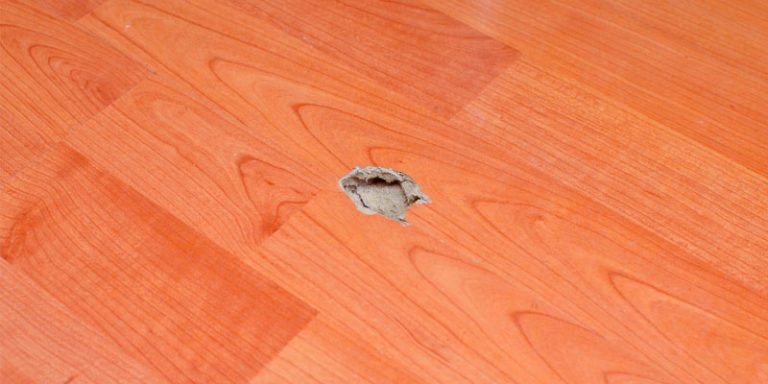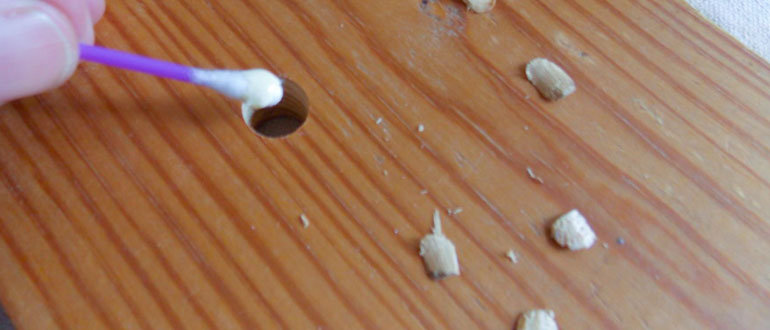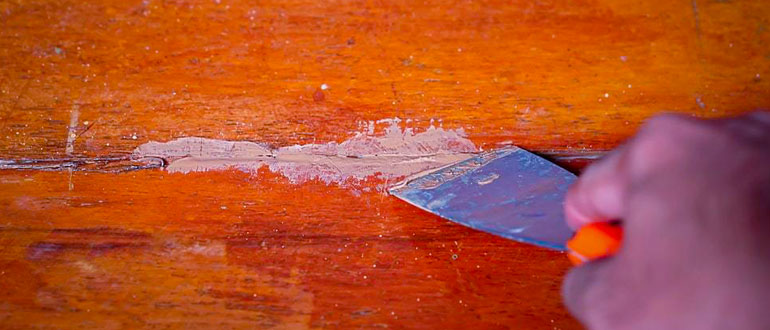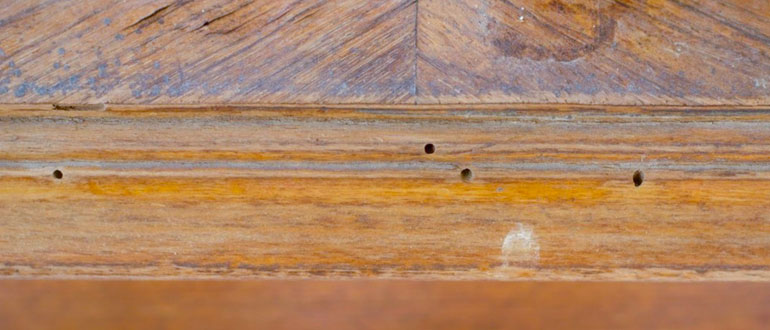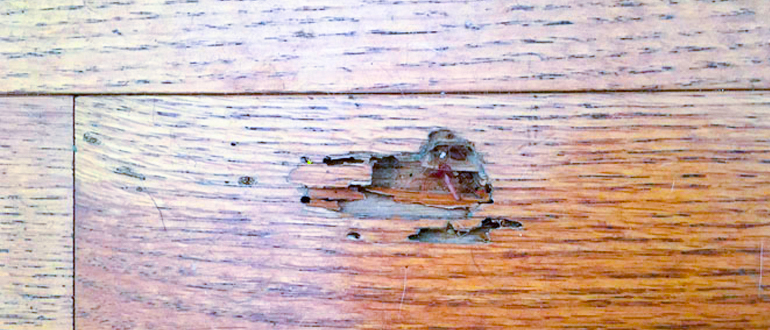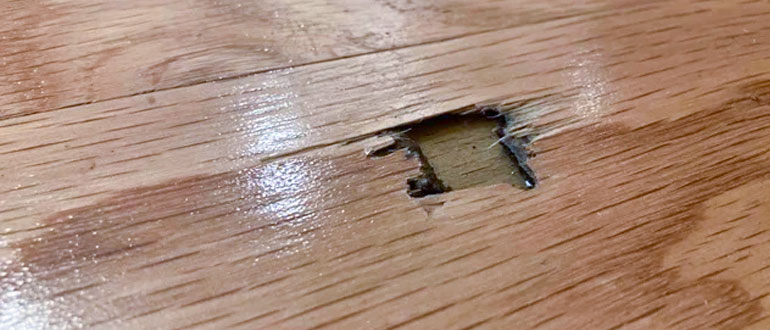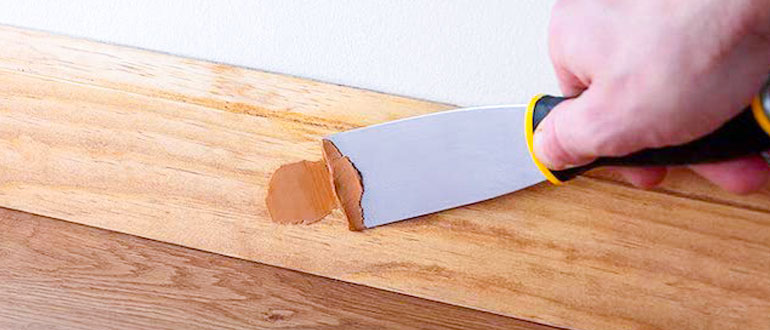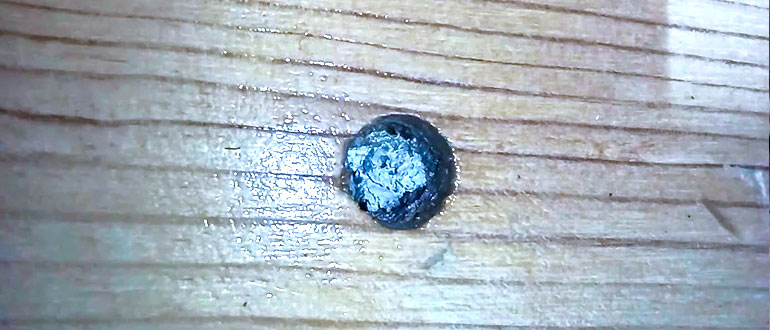wood floors are an elegant choice for houses and offices. Many houses and offices use traditional wood to make their floor. The wood floor brings a realistic view of houses and offices. But the wood floor has some troubles when it is installed on the floor. Let’s explore how to fix a hole in a hole in wood floor.
sometimes, One of the common troubles there is you will see some holes in the wood floor. You can fix a hole in your wood floor with proper tools and the best wood filler by investing a little effort. In this article, we’ll show the best way to fix holes in wood floors that already exist in your house.
Gather necessary Tools and Materials to Fix Hole in Wood Floor
When it comes to fixing a hole in a wood floor. Having the right tools and materials at your disposal is crucial. Here is a list of essential items you’ll need to successfully repair a hole in a wood floor:
Wood Filler: Wood filler is a putty-like substance specifically designed to fill in gaps, holes, and cracks in wood surfaces. Choose a high-quality wood filler that matches the color and grain of your wood floor for a seamless repair.
Putty Knife: A putty knife is used to apply the wood filler smoothly and evenly into the hole. Opt for a flexible putty knife with a wide blade to ensure efficient application.
Sandpaper: Sandpaper is essential for smoothing the repaired area and blending it with the surrounding wood. Choose sandpaper with different grits, such as coarse (60-80 grit) for initial sanding and fine (120-220 grit) for final sanding.
Vacuum or Broom: Before you begin the repair process, ensure the area around the hole is free from dust, debris, and loose wood particles. A vacuum cleaner or broom will help you clean the area effectively.
Stain or Paint: Depending on the finish of your wood floor, you may need a stain or paint that matches the color of your floor. This will help you achieve a consistent appearance once the repair is complete.
Protective Gear: It’s important to protect yourself during the repair process. Wear safety goggles to shield your eyes from flying debris, and use a dust mask to prevent inhalation of dust particles.
Damp Cloth: Keep a damp cloth or sponge nearby to clean up excess wood filler and wipe away any spills or smudges.
Choose the Perfect Wood Filler to Fix Hole in Wood Floor
When selecting a wood filler to fix a hole in a wood floor. It’s esential to choose a material that is specifically designed for wood repairs and offers the following qualities:
Wood Compatibility: Opt for a wood filler that is formulated to work well with the type of wood used in your flooring. Different wood species have unique characteristics, such as grain patterns and porosity, so it’s essential to select a filler that matches the wood’s properties to achieve a seamless blend.
Durability: Look for a wood filler that is durable and resistant to cracking, shrinking, or crumbling over time. This ensures that the repaired area remains stable and maintains its integrity even with regular use and foot traffic.
Easy Application: Choose a wood filler that is easy to work with and has a smooth consistency. It should spread evenly and smoothly into the hole, allowing for effortless application. A pliable and workable filler makes it easier to achieve a seamless repair.
Quick Drying Time: Consider a wood filler that has a relatively quick drying time. While drying times can vary depending on the product, selecting a filler that dries within a reasonable timeframe allows you to proceed with sanding and finishing the repair without significant delays.
Color Matching: Ideally, select a wood filler that closely matches the color and grain of your wood floor. Many wood fillers come in a range of shades to accommodate different wood tones, enabling you to achieve a more natural and inconspicuous repair.
Compatibility with Finishes: If your wood floor has a particular finish, such as oil-based or water-based polyurethane, make sure the wood filler is compatible with that type of finish. This ensures that the repaired area can be properly sealed and finished, maintaining consistency with the rest of the floor.
Step-by-Step Methods to fix hole in wood floor
Let’s start the best step-by-step guide to fixx hole in wood floor.
Step-1: Isolate the hole in the wood floor to Fix Hole in Wood Floor
Isolate the hole in the wood floor. Clear the area surrounding the hole by removing any furniture or objects that may obstruct your access. This will create a clean and open workspace, allowing you to focus on the repair.
By isolating the hole, you can work more efficiently and avoid any accidental damage to the surrounding floor. Ensure that the immediate area around the hole is clear and free from any obstacles, providing ample space for the repair process. Taking this initial step sets the stage for a successful and well-contained repair of the hole in the wood floor.
Step 2: Shape the filler piece of wood to fill the hole
Shape the filler piece of wood to fill the hole. Take a piece of wood that matches the species and grain pattern of your wood floor. Measure the dimensions of the hole and use a saw or chisel to shape the filler piece to fit snugly into the opening.
Additionally, you should ensure that the edges of the filler piece are smooth and aligned with the surrounding floor. Test the fit by placing the filler piece into the hole and making any necessary adjustments until it sits flush with the floor surface. Properly shaping the filler piece ensures a precise and secure fit, setting the foundation for a seamless repair.
Step 3: Install the filler wood piece and wait for the epoxy to dry
Install the filler wood piece and wait for the epoxy to dry. Apply a layer of epoxy adhesive to the bottom and sides of the shaped filler wood piece. Press it firmly into the hole, ensuring it sits flush with the surrounding floor.
Additionally, the epoxy will provide a strong bond and stability. Allow the epoxy to dry completely according to the manufacturer’s instructions. This drying time can vary, so be patient and avoid placing any weight or traffic on the repaired area during this period. Waiting for the epoxy to dry ensures a secure and durable repair, allowing the filler wood piece to seamlessly integrate with the rest of the wood floor.
Step 4: Shave the filler wood to be leveled with the wood floor
Shave the filler wood to be leveled with the wood floor. Once the epoxy has fully dried, use a chisel, hand plane, or sandpaper to carefully shave off any excess filler wood that protrudes above the surface of the floor. Take your time and work gradually, checking the levelness frequently to ensure a smooth and even surface.
Furthermore, Be mindful not to remove too much material, as you want the filler wood to be perfectly aligned with the surrounding wood floor. Continuously check the progress by running your hand over the repaired area to ensure a seamless transition between the filler wood and the floor.
Step 5: Add stain and grain marks to the filler wood piece to Fix Hole in Wood Floor
Add stain and grain marks to the filler wood piece. To achieve a more natural and seamless look, you can use a wood stain or marker to match the color and grain pattern of the surrounding wood floor. Select a stain that closely matches the existing floor color or blend different stains to achieve the desired shade.
Subsequently, apply the stain to the filler wood piece, following the manufacturer’s instructions. Use a small brush or cloth to ensure even coverage and blend it with the surrounding floor. Additionally, you can use a grain marker to mimic the grain pattern of the wood floor, enhancing the realism of the repair. Allow the stain to dry completely before proceeding to the next step.
Step 6: Wait for the wood stain to dry
After applying the stain to the filler wood piece, allow it to dry completely according to the manufacturer’s instructions. The drying time can vary depending on the type of stain used and environmental conditions.
Furthermore, It’s important to exercise patience during this step to ensure the stain sets properly and achieves the desired color. Avoid touching or placing any objects on the stained area during the drying process to prevent smudging or damage. Waiting for the wood stain to dry thoroughly will ensure a professional-looking repair that seamlessly blends with the surrounding wood floor.
The Most CommonFAQs
Q1: Can I use wood putty or wood filler to fix a hole in a wood floor?
A1: Yes, wood putty or wood filler is commonly used to fix small to medium-sized holes in wood floors. They are specifically designed to fill and repair damaged areas in wood surfaces.
Q2: How long does it take for the wood filler to dry?
A2: The drying time for wood filler varies depending on the brand and type of filler used. It can range from a few hours to overnight. Refer to the manufacturer’s instructions for the recommended drying time.
Q3: Can I walk on the repaired area immediately after applying the wood filler?
A3: It’s generally advisable to avoid walking on the repaired area until the wood filler has fully dried and cured. This can help ensure the filler sets properly and doesn’t damage or displace.
Q4: Do I need to sand the repaired area after applying the wood filler?
A4: Yes, sanding the repaired area is an important step to achieve a smooth and even finish. Use sandpaper, starting with a coarse grit and gradually moving to a finer grit, to level the filler with the surrounding floor.
Q5: Should I stain or paint the repaired area to match the rest of the wood floor?
A5: If your wood floor has a stained or painted finish, it’s recommended to stain or paint the repaired area to match. This will help create a uniform appearance. Use a matching stain or paint and follow the application instructions for best results.
Q6: Can I use wood glue instead of epoxy to secure the filler wood piece?
A6: While wood glue can be used for certain wood repairs, epoxy is generally a better choice for securing filler wood pieces in wood floor repairs. Epoxy provides a stronger and more durable bond, ensuring the filler piece remains securely in place.
Q7: What if the hole in my wood floor is too large to be filled with wood filler?
A7: For larger holes, you may need to consider more extensive repairs, such as replacing the damaged floorboard or hiring a professional wood flooring contractor for assistance. Wood fillers are typically suitable for smaller to medium-sized holes.
Remember, it’s always a good idea to consult the manufacturer’s instructions. If needed, seek professional advice to ensure you choose the most appropriate method and materials for your specific wood floor repair.
Conclusion
In conclusion, Fixing a hole in a wood floor is a manageable task. Definitely, you can able to fix hole in wood floor with the right tools, materials, and techniques. By following a step-by-step process, you can restore the integrity and appearance of your wood floor. Begin by isolating the hole and preparing the area. Then, shape and install a filler wood piece using epoxy for a secure bond.
Once the epoxy has dried, carefully shave and level the filler wood to create a smooth surface. Applying stain or paint can help blend the repaired area with the rest of the floor. Finally, allow proper drying time and follow manufacturer’s instructions for best results. With patience and attention to detail, you can successfully fix a hole in your wood floor and enjoy its renewed beauty for years to come.
You May Also Like to Read:
